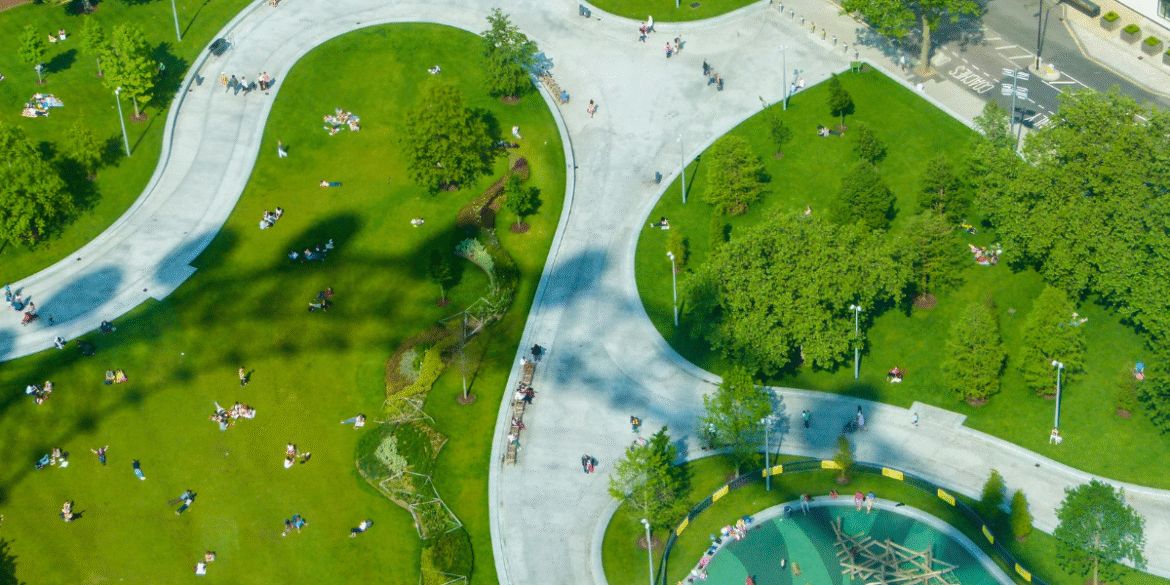In 2025, Miami is undergoing a green transformation as the city embraces the growing trend of sustainable urban parks. As the Magic City continues to expand, local officials and developers are increasingly prioritizing green spaces that provide residents with a refuge from the urban hustle. These parks are not only adding much-needed greenery to the concrete jungle but are also enhancing Miami’s urban planning, promoting environmental sustainability, and improving the quality of life for residents. Here’s how Miami’s park scene is evolving and what to expect in the coming years.
A Green Revolution in Miami’s Urban Landscape
Miami’s urban environment has often been associated with bustling streets, towering condos, and miles of concrete. But in 2025, the city is redefining itself by incorporating more parks, public gardens, and recreational spaces. These new green spaces are being designed not only for relaxation but also to foster community engagement, environmental education, and even help mitigate the impacts of climate change.
The Rise of Eco-Friendly Parks
One of the most notable additions to Miami’s urban park system is Everglades Park, located in the heart of Downtown Miami. Opened in late 2024, this park is a prime example of the city’s commitment to sustainability. Spanning over 50 acres, Everglades Park is designed to mimic the natural wetlands of Florida, complete with native plants, wildlife habitats, and sustainable water management systems.
The park is home to elevated boardwalks that provide visitors with a chance to explore the local ecosystem while minimizing their environmental impact. Solar-powered lighting and rainwater harvesting systems are just a few of the green features incorporated into the park’s design, making it a model for sustainable public spaces in urban areas.
“This park is not just a place to relax, but a living classroom where visitors can learn about the importance of wetlands and environmental conservation,” says Marta Lopez, Miami’s Chief Urban Planner. “We want to make sure that people are connecting with nature in meaningful ways while promoting sustainable practices.”
Miami Beach’s Transformative Green Project
Miami Beach is also seeing a transformation in its park spaces, with the introduction of the Beachfront Oasis Park, a multimillion-dollar project set to open in early 2025. This new park will span 10 acres along the beach, offering a blend of lush green lawns, shaded pavilions, outdoor fitness areas, and walking paths that connect visitors directly to the beach.
What sets Beachfront Oasis apart is its emphasis on climate resilience. The park includes elevated walkways designed to withstand rising sea levels, stormwater management systems to handle heavy rainfall, and native landscaping that can endure Miami’s harsh tropical climate. The park is designed to be a safe haven during Miami’s intense summer heat, with plenty of shaded areas for outdoor gatherings and relaxation.
“We’re not just building a park; we’re investing in our city’s future,” says Jennifer Martinez, Miami Beach Parks Director. “Beachfront Oasis Park is part of a larger initiative to combat climate change while creating spaces that bring people together.”
Health and Wellness: The Impact of Green Spaces
Beyond their environmental and aesthetic benefits, urban parks are increasingly seen as essential for public health. In a city like Miami, where outdoor activities are a staple of daily life, green spaces provide opportunities for exercise, social interaction, and mental well-being.
The Brickell Greenway, a 1.5-mile park running through Miami’s bustling financial district, is another example of how urban green spaces are being integrated into the fabric of city life. This linear park features walking and biking trails, outdoor fitness equipment, and public art installations, making it an ideal spot for daily commuters to get some fresh air or fit in a quick workout.
Local health experts have praised the expansion of green spaces, citing their role in reducing stress and promoting physical activity. “Access to nature is proven to have a positive impact on mental health,” says Dr. Emily Carter, a Miami-based psychologist. “Having these green spaces in the city allows people to disconnect from their fast-paced lives and reconnect with nature, which can be incredibly therapeutic.”
A Community Hub for All Ages
What sets Miami’s new parks apart from traditional green spaces is their focus on community engagement. Parks like Liberty Grove, located in the Wynwood district, have been designed with features that encourage people of all ages to gather and interact. Liberty Grove includes an outdoor amphitheater, interactive play areas for children, community gardens, and even spaces for local artists to showcase their work.
“The idea is to create places where people can come together and experience a sense of belonging,” says Hector González, the lead architect behind Liberty Grove. “Whether it’s attending a live performance, learning how to grow your own vegetables, or simply enjoying an afternoon with family, this park is meant to foster connections.”
The Future of Parks in Miami: Sustainability and Innovation
As Miami continues to grow, the city’s approach to parks is evolving with a strong emphasis on sustainability and innovation. Upcoming projects include Sunset Park, a new 30-acre space planned for the Little Havana neighborhood, which will feature urban farming areas, outdoor classrooms, and a state-of-the-art amphitheater for performances and community events.
Moreover, technological innovation is becoming an integral part of Miami’s park development. The upcoming SmartPark project in Coral Gables will incorporate smart technology, including Wi-Fi-enabled benches, solar-powered charging stations, and apps that provide real-time information on park conditions and events.
“Technology can play a key role in enhancing the experience of public spaces,” says Luis Serrano, Miami’s Director of Parks and Recreation. “SmartPark will offer a seamless, tech-enabled environment that connects people with the parks while making them more sustainable and efficient to manage.”
Key Takeaways:
-
Everglades Park: A sustainable 50-acre park in Downtown Miami designed to mimic Florida’s wetlands, with eco-friendly features like solar lighting and rainwater harvesting.
-
Beachfront Oasis Park: A 10-acre park in Miami Beach designed for climate resilience with elevated walkways, stormwater management, and native landscaping.
-
Brickell Greenway: A 1.5-mile park offering walking trails, fitness equipment, and public art installations in Miami’s financial district.
-
Liberty Grove: A community-focused park in Wynwood with play areas, amphitheaters, and public art designed to bring people together.
-
Future Projects: Miami is planning further expansions of parks with a focus on sustainability and innovation, including smart technology and urban farming.

